Case story
Subgrade Stabilization & Base Reinforcement, Pueblo, CO
United States, Colorado, Pueblo
Case Study
|
Application |
Subgrade Stabilization & Base Reinforcement |
Job owner |
Vestas |
|
Location |
Pueblo, CO |
Engineer |
Martin & Martin, CTL Thompson |
|
Product |
Mirafi® RS380i, RS580i |
Date of Installation (m/y) |
September 2016 |
THE CHALLENGE
In August 2016, a wind component manufacturer in Pueblo, CO bid a project to expand their existing lay down yard by approximately 140 acres. Due to the fact that wind development tax credits were available through the end of 2016, there was an accelerated construction schedule for substantial completion of the work. The project was divided into 7 phases, with completion scheduled for early 2017. In addition to a demanding construction schedule, the closest aggregate source was 50 miles away, making import of aggregate both expensive and time consuming. The project engineers knew they had to develop alternatives to address the challenging construction schedule and high aggregate costs,while also addressing the poor soil conditions. Per the geotechnical report, the sub-soils generally consisted of sandy clay over clay stone bedrock with the presence of shallow groundwater in several areas. The strength of the subgrade utilized for the design was a California Bearing Ratio (CBR) of 3%. High sulfate concentrations were measured across the site.
THE DESIGN
The original design options were 18 inches of aggregate without a geosynthetic, 12 inches of aggregate with a punch-and-drawn geogrid placed at the mid-point of the section, or 6 inches of aggregate placed over 12 inches of chemically treated subgrade. The sections were stout due to the nature of the onsite soils. Utilizing TenCate’s Miraspec design software, the recommended aggregate thickness, based on design criteria provided by the engineer and a factor of safety of 1.2, was 8 inches of aggregate over one layer of Mirafi® RS380i. The thinner aggregate section utilizing Mirafi® RS380i was appealing from a cost perspective and the positive impact it would provide in regards to the construction schedule. The Mirafi® RSi design was also preferred because it minimized risk, when compared to the chemically treated subgrade option, since sulfates typically react adversely when they encounter cement, lime, or certain grades of fly-ash.
THE CONSTRUCTION
Installation of the Mirafi® RSi began in late September 2016. The contractor utilized a spreader bar to expedite the installation process after installing the first several rolls manually. The recommended overlap was 12 inches. Typically, pins are not required to hold the geotextile in place, but due to high winds in this part of Colorado, the contractor opted to install pins sporadically along the overlaps. The aggregate base course, again, hauled in from 50 miles away, was either belly or side dumped onto the geotextile and then bladed and compacted in place.
THE PERFORMANCE
Vestas has transported their components onto the completed portion of the laydown yard and with the exception of a few isolated soft areas, the section is performing extremely well. Even after utilizing haul equipment with heavier axle loads than what was included in the original design, the section is showing little, if any deflection. Not only did the Mirafi® RSi provide significant tensile reinforcement and frictional confinement, allowing for a substantial reduction of aggregate thickness, but it will additionally provide long-term separation, thereby preventing fines within the subgrade from migrating into the aggregate base course. Working with the Owner’s representative, it is estimated that the Mirafi® RSi section provided $1.95Mil in savings as compared to the geogrid option and approximately $5.5Mil in savings compared to the thicker non-reinforced section. While the time savings was not calculated in detail, the chosen section gave the contractor a good chance of meeting the aggressive construction schedule. In regards to the “Green” aspect of the chosen design, it is estimated that the Mirafi® RSi section provided a 42Mil kg (46,000 ton) reduction in the carbon footprint, as compared to the non-reinforced option. This amount of carbon equates to an average car being driven non-stop for 187 years.



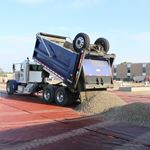
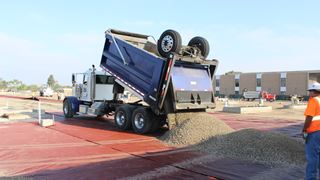
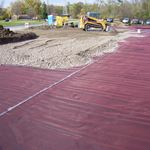
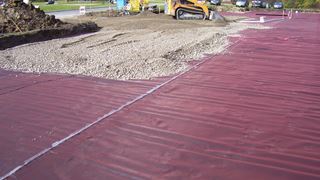
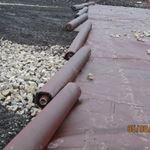
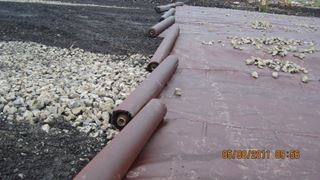
.jpg?w=40&h=40&action=crop)